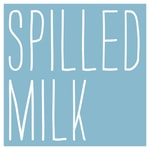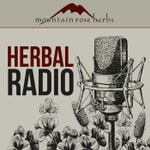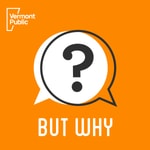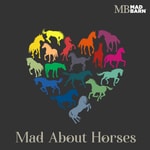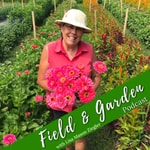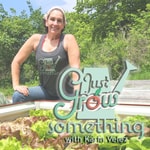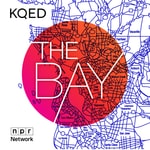Naturally Florida – Details, episodes & analysis
Podcast details
Technical and general information from the podcast's RSS feed.
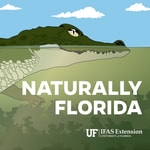
Naturally Florida
Shannon Carnevale and Lara Milligan
Frequency: 1 episode/28d. Total Eps: 55

Recent rankings
Latest chart positions across Apple Podcasts and Spotify rankings.
Apple Podcasts
🇺🇸 USA - nature
24/07/2025#93🇺🇸 USA - nature
23/07/2025#80🇺🇸 USA - nature
22/07/2025#91🇺🇸 USA - nature
18/07/2025#89🇺🇸 USA - nature
17/07/2025#61🇺🇸 USA - nature
16/07/2025#71🇺🇸 USA - nature
14/07/2025#73🇺🇸 USA - nature
13/07/2025#70🇺🇸 USA - nature
12/07/2025#74🇺🇸 USA - nature
11/07/2025#75
Spotify
No recent rankings available
Shared links between episodes and podcasts
Links found in episode descriptions and other podcasts that share them.
See allRSS feed quality and score
Technical evaluation of the podcast's RSS feed quality and structure.
See allScore global : 73%
Publication history
Monthly episode publishing history over the past years.
I want to know, have you ever smelled the rain?
Season 4 · Episode 9
lundi 19 août 2024 • Duration 17:51
If the title of this episode sounds familiar, you must be a Creedance Clearwater Revival fan like Shannon is!
Well, CCR might have actually been singing about seeing the rain but on today's episode of Naturally Florida, we're talking about smelling the rain. Rather, more accurately, we're talking about the smell before the rain, also known as Petrichor.
Learn more:
- https://blogs.ifas.ufl.edu/escambiaco/2023/08/02/weekly
- https://www.acs.org/content/dam/acsorg/education/students/highschool/chemistryclubs/infographics/petrichor-the-smell-of-rain.pdf
Sources:
Pentastomes in Paradise: Invasive Parasite Plaguing Florida’s Snakes
Season 4 · Episode 8
lundi 15 juillet 2024 • Duration 18:26
Florida Black Bears
Season 3 · Episode 11
lundi 20 novembre 2023 • Duration 24:32
Florida black bears have been in the news, frequently, this year! On today's episode, we chat about the Florida black bear's diet, behavior, and biology, and provide some tips for co-existing with our resident bears.
Learn More:
- Living with the Florida black bear - https://www.myfwc.com/bear
- Where are the large bear populations? - https://myfwc.com/wildlifehabitats/wildlife/bear/bear-management-units/
How You Can Help:
- Limit attractants in your yard and protect bears from accessing your garbage cans. Be bear aware: https://myfwc.com/wildlifehabitats/wildlife/bear/living/
- Report a sick, injured, orphaned, or dead bear: https://myfwc.com/wildlifehabitats/wildlife/bear/nuisance-contact/
- If you live in areas with a lot of bear activity, learn how to "Scare That Bear!" here: https://myfwc.com/wildlifehabitats/wildlife/bear/living/scare/
Sources for this Episode:
- Florida Fish and Wildlife Conservation Commission: https://www.myfwc.com/bear
- Bears and Apiaries (UF/IFAS): https://edis.ifas.ufl.edu/publication/IN1318
- Living with Black Bears: https://blogs.ifas.ufl.edu/polkco/2017/04/24/florida-black-bears/
If you enjoyed this episode, please consider sharing it with a friend who might enjoy learning about Florida's natural areas and the wild things that live here!
If you're active on iNaturalist, consider joining our iNaturalist project, Naturally Florida's Listener Observations, here: https://www.inaturalist.org/projects/naturally-florida-s-listener-observations
Bloom, there it goes!
Season 3 · Episode 10
lundi 16 octobre 2023 • Duration 24:21
THANK YOU to all of our loyal listeners! Has this podcast made a difference in your life?
- The survey is now closed, but we look forward to hearing from you again next fall! If you have comments or topics for next season, submit them at www.naturallyfloridapodcast.com
If you live in Florida, chances are you have heard or read about “harmful algal blooms" commonly referred to as HABs. We have received many requests for an episode on this topic, so…here it is! What are algae? What is a HAB? Are all algae bad? Learn this and more in today’s episode.
Learn More:
- Protecting Florida Together - https://protectingfloridatogether.gov/
- Marine HABs - https://myfwc.com/redtide/
- Freshwater HABs - https://floridadep.gov/AlgalBloom
- U.S. National Office for Harmful Algal Blooms - https://hab.whoi.edu/
How You Can Help:
- Limit your contribution to excess nutrients by fertilizing only when necessary, ensuring you blow grass clippings back on the landscape (not down a storm drain…that’s illegal), plant native plants to help with nutrient uptake, and check that your down spout is directed into your landscape and not down your driveway.
- Report an algal bloom in a freshwater system - www.reportalgalbloom.com
- Report fish kills at the Fish Kill Hotline 1-800-636-0511
- Avoid contact with water that has algae blooms
Sources for this Episode:
- Historical Occurrence of HABs - https://hab.whoi.edu/about/historical-occurrence-of-habs/
- An Introduction to Harmful Algal Blooms (HABs) in Florida - https://www.youtube.com/watch?v=VOi156_jl9c
- Harmful Algal Blooms - https://edis.ifas.ufl.edu/topics/harmful_algal_blooms
If you enjoyed this episode, please consider sharing it with a friend who might enjoy learning about Florida's natural areas and the wild things that live here!
If you're active on iNaturalist, consider joining our iNaturalist project, Naturally Florida's Listener Observations, here: https://www.inaturalist.org/projects/naturally-florida-s-listener-observations
PodBLAST - The Impact of Fireworks
Season 3 · Episode 9
lundi 18 septembre 2023 • Duration 17:49
THANK YOU to all of our loyal listeners! Has this podcast made a difference in your life?
- The survey is now closed, but we look forward to hearing from you again next fall! If you have comments or topics for next season, submit them at www.naturallyfloridapodcast.com
Although fireworks are a staple for celebrations around the world, the explosives almost always contain pollutants like heavy metals, perchlorates, and aerosols, which harm air and water quality. The noise and flashes can startle many organisms, sometimes leading to nesting birds scattering, leaving their young vulnerable to predators. The good news is, there are many alternatives to traditional fireworks shows— making the switch would help protect Florida wildlife and ecosystems. Learn More:
- Not just a flash in the pan: short and long term impacts of fireworks on the environment – https://www.publish.csiro.au/pc/Fulltext/PC22040
- Keeping wildlife safe on Independence Day –https://www.fws.gov/story/keeping-wildlife-safe-independence-day
- Birds flee en mass from New Year's Eve fireworks –https://academic.oup.com/beheco/article/22/6/1173/218852#79500851
How You Can Help:
- Search for a "Drone Light Show" or "Laser Light Show" near you to watch instead of doing your own fireworks at home. Or, watch a local city or town's fireworks show.
- Celebrate a firework-less Fourth of July with drones, bubble guns, or confetti cannons - https://www.popsci.com/environment/fireworks-alternatives/
- Consider purchasing quiet fireworks - https://www.nytimes.com/2016/07/01/science/july-4-fireworks-quiet.html
Sources for this Episode:
- Not just a flash in the pan: short and long term impacts of fireworks on the environment – https://www.publish.csiro.au/pc/Fulltext/PC22040
- The impact of fireworks on airborne particles - https://www.sciencedirect.com/science/article/abs/pii/S1352231007009685
- Environmental impacts of perchlorate with special reference to fireworks - a review - https://link.springer.com/article/10.1007/s10661-014-3921-4
If you enjoyed this episode, please consider sharing it with a friend who might enjoy learning about Florida's natural areas and the wild things that live here!
If you're active on iNaturalist, consider joining our iNaturalist project, Naturally Florida's Listener Observations, here: https://www.inaturalist.org/projects/naturally-florida-s-listener-observations
Sounds of Summer - Calling Frogs
Season 3 · Episode 8
mardi 22 août 2023 • Duration 24:22
In this episode, we continue our exploration of the sounds of summer. This episode’s focus is all about commonly heard frogs in Florida. We have 33 species of frog in the state. More often heard than seen, this episode features six frog species, including some basic physical and audio identification information, habitats, what you can do to help, and more!
Learn More:
- Florida’s Frogs – https://ufwildlife.ifas.ufl.edu/frogs/florida.shtml
- Frogs & Toads of Florida – https://wec.ifas.ufl.edu/extension/wildlife_info/frogstoads/image_index.php
- Frog Call Lookup – https://www.pwrc.usgs.gov/frogquiz/index.cfm?fuseaction=main.lookup
How You Can Help:
- Consider installing Treefrog Houses ( https://edis.ifas.ufl.edu/publication/UW308) or installing an artificial pond
- Plant native vegetation which will provide shelter and attract pollinators, a critical food source for many frog species – https://ffl.ifas.ufl.edu/resources/apps/plant-guide/
- Consider implementing Integrated Pest Management to limit your use of pesticides – https://gardeningsolutions.ifas.ufl.edu/care/pests-and-diseases/pests/management/integrated-pest-management.html
- Install a water feature - https://gardeningsolutions.ifas.ufl.edu/design/types-of-gardens/water-gardens.html
Sources for this Episode:
- Amphibian Contributions to Ecosystem Services – https://scholars.unh.edu/nhaes/330/
- Florida’s Frogs – https://ufwildlife.ifas.ufl.edu/frogs/florida.shtml
- Frog Call Lookup – https://www.pwrc.usgs.gov/frogquiz/index.cfm?fuseaction=main.lookup
If you enjoyed this episode, please consider sharing it with a friend who might enjoy learning about Florida's natural areas and the wild things that live here!
If you're active on iNaturalist, consider joining our iNaturalist project, Naturally Florida's Listener Observations, here: https://www.inaturalist.org/projects/naturally-florida-s-listener-observations
Ticks and Tickborne Illness in Florida
Season 3 · Episode 7
lundi 17 juillet 2023 • Duration 21:59
The creepiest, crawliest, grossest of arachnids, in our opinion, are ticks. And no, we don't feel bad calling them gross!
Tick-borne illnesses can wreak havoc on people's lives and there is still so much we don't know about them. On today's episode, learn what we DO know about ticks in Florida, the diseases they may carry, and what to do to protect yourself, your family, and your friends from ticks.
Learn More:
- Florida-specific tick information: https://sfyl.ifas.ufl.edu/family-resources/ticks-and-disease/ (UF/IFAS) and https://www.floridahealth.gov/diseases-and-conditions/tick-and-insect-borne-diseases/index.html (FL Dept. of Health)
- The CDC has a wonderful tool to identify the best insect repellants for various activities. Scroll to the bottom of this page to learn, "How to choose the right insect repellent": https://www.epa.gov/insect-repellents/find-repellent-right-you (CDC)
- More information on the diseases Ticks can carry and where they are found: https://www.cdc.gov/ticks/diseases/index.html (CDC)
Call to Action:
Learn about tick-bite prevention! That's really our only Call to Action this month.
- Preventing Tick bites before going outdoors, and after: https://www.cdc.gov/ticks/avoid/on_people.html (CDC)
- Dog checks: https://www.cdc.gov/ticks/avoid/on_pets.html (CDC)
Sources for Show Notes:
- Reptile Host Associations of Ixodes Scapularis in Florida and Implications for Borrelia Spp. Ecology
- A Survey of Tick-Borne Bacterial Pathogens in Florida
- Facts About Wildlife Diseases Ehrlichiosis1
- Ticks and Tick-Borne Infections Complex Ecology, Agents, and Host Interactions
- Preventing Tick Bites
- Preventing Ticks in the Yard
- How Ticks Spread Disease
Sounds of Summer - Singing Insects
Season 3 · Episode 6
mardi 20 juin 2023 • Duration 19:13
What comes to mind when you think of summer? Hot. Beaches. No school. What about singing insects? No? Perhaps not, but we’re sure you’ve heard the sounds of summer. Nobody sounds the alarm for summer weather like our native cicadas. Find out about them and more in today’s episode.
Learn more:
Common Grasshoppers in Florida - https://edis.ifas.ufl.edu/publication/IN010
Cicadas of Florida - https://entnemdept.ufl.edu/creatures/misc/bugs/cicadas.htm
Singing Insects of North America - https://orthsoc.org/sina/index.htm
Eastern Lubber Grasshopper - https://edis.ifas.ufl.edu/publication/IN132
How You Can Help:
Leave portions of your yard unmown
Reduce use of lawn chemicals
Be tolerant of chewed leaves
Sources for this Episode:
Singing Insects of North America - https://orthsoc.org/sina/index.htm
Songs of Insects – A Guide to the Voices of Crickets, Katydids & Cicadas - http://songsofinsects.com/
Singing Insects: Our Overlooked Outside Chorus - https://youtu.be/VBVzeV8sKXQ
If you enjoyed this episode, please consider sharing it with a friend who might enjoy learning about Florida's natural areas and the wild things that live here!
If you're active on iNaturalist, consider joining our iNaturalist project, Naturally Florida's Listener Observations, here: https://www.inaturalist.org/projects/naturally-florida-s-listener-observations
Three Common Snakes in Residential Areas
Season 3 · Episode 5
mardi 23 mai 2023 • Duration 17:06
On today’s episode, you’ll learn about three non-venomous snake species common to residential areas in Florida. Slithering into a neighborhood near you, these common snake species are found all over Florida.
Learn More:
- Red Cornsnake: https://www.floridamuseum.ufl.edu/florida-snake-id/snake/red-cornsnake/
- Black Racer: https://www.floridamuseum.ufl.edu/florida-snake-id/snake/north-american-racer/
- Ring-necked Snake: https://www.floridamuseum.ufl.edu/florida-snake-id/snake/ring-necked-snake/
- Learn all about Florida’s Snakes, here: https://ufwildlife.ifas.ufl.edu/snakes/florida.shtml
Call to Action:
- Let them be, let snakes live! They provide so many ecosystem benefits for us. Can you imagine how different the rodent, lizard, and insect populations might be without predators like snakes?
- Prevent encounters rather than trapping or killing snakes. Reduce snake encounters with these tips from UF/IFAS Wildlife Extension: https://ufwildlife.ifas.ufl.edu/preventing_encounters.shtml
- Identify snakes you see using this handy guide: https://www.floridamuseum.ufl.edu/florida-snake-id/ Or, If you’re ever unsure, snap a picture from a safe distance and email us!
Sources for the show:
- UF IFAS Wildlife’s Johnson Lab: “Florida’s Snakes” https://ufwildlife.ifas.ufl.edu/snakes/florida.shtml And https://ufwildlife.ifas.ufl.edu/dealing_with_snakes.shtml
- Florida Fish and Wildlife’s “Living with Snakes” https://myfwc.com/conservation/you-conserve/wildlife/snakes/
- Snake Bites: https://www.cdc.gov/niosh/topics/snakes/default.html
When You Think of Pines, I Hope You Think of Pinecones
Season 3 · Episode 4
lundi 17 avril 2023 • Duration 22:51
We have all probably interacted with pine cones in some way, whether we collected them to start a bon fire, rolled them in peanut butter to create a bird feeder, or avoided them during pollen season. Pine trees produce pine cones, a unique seed with a fascinating science and ecological importance for Florida’s ecosystems.
Learn more:
- Common Pines of Florida - https://edis.ifas.ufl.edu/publication/FR003
- Fun facts about pine cones - www.canr.msu.edu/news/fun_facts_about_pine_cones
How You Can Help:
- Plant a pine tree!- U https://edis.ifas.ufl.edu/publication/FR456
- Support prescribed fire - www.fdacs.gov/Forest-Wildfire/Wildland-Fire/Prescribed-Fire
- Leave pine cones where you found them - www.srs.fs.usda.gov/compass/2013/05/07/the-problem-with-longleaf-pine-seeds/
Sources for this Episode:
- Longleaf Pine - www.srs.fs.usda.gov/pubs/misc/ag_654/volume_1/pinus/palustris.htm
- Native Trees of the Southeast – An Identification Guide - www.workman.com/products/native-trees-of-the-southeast/paperback
- Morphology of Plants and Fungi - www.abebooks.com/9780060408398/Morphology-Plants-Fungi-Bold-Harold-0060408391/plp
If you enjoyed this episode, please consider sharing it with a friend who might enjoy learning about Florida's natural areas and the wild things that live here!
